There are many ancient treatises on agriculture, often recorded in written form as poetry, which detail information about plants and animals, or how to improve and manage crops. A number of plants that were familiar to the ancient Greeks and Romans can also be found in New Zealand. UC Classics student Laura Bythell explores the connections between the ancient world and the natural world outside your window.
When you look in your garden, you might not see a great deal of significance in your weeds, other than a reminder that it’s time to grab the lawn mower again. However, many common plants that have made it to New Zealand from across the ocean might surprise you with their classical significance. This handy list will help you identify weeds and plants in your garden whose hidden histories you can use to impress your family and friends.
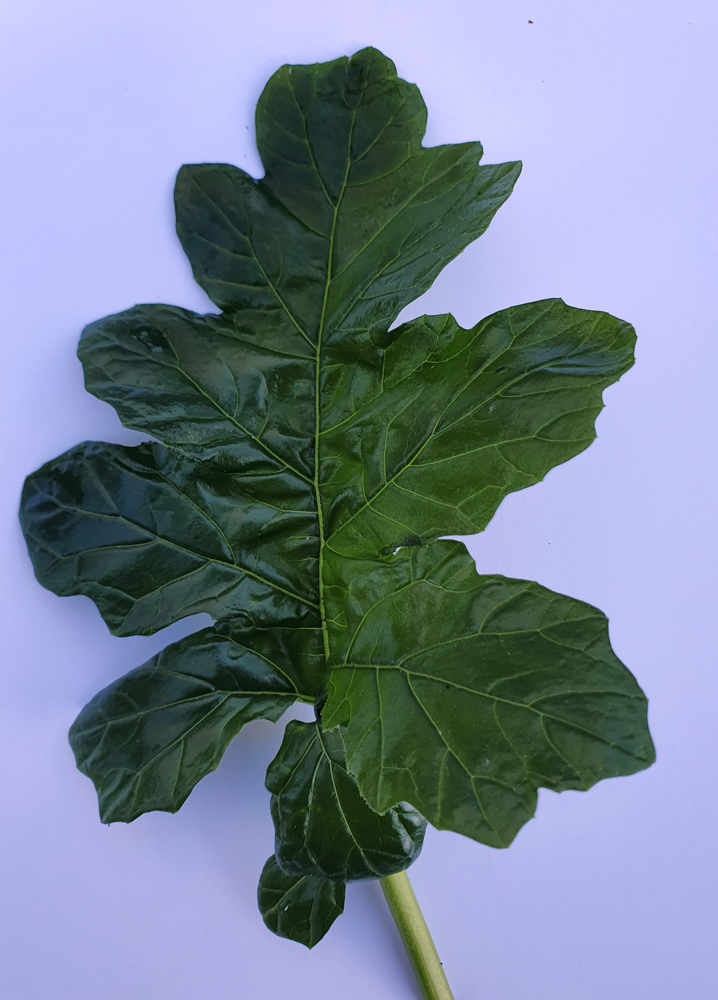
Acorns: (Greek: βάλανος – balanos. Latin: glans or balanus)
Acorn-strewn pathways are a common sight during Autumn in New Zealand due to the popularity of oak trees. While acorns are now mostly just a nuisance, they are actually thought to be one of humanity’s first foods. Only some varieties of acorn are edible, but those that can be eaten are useful as a food during times of famine and can be ground into a flour. Acorns have been mentioned by multiple classical authors; according to the Greek historian Strabo, they were a staple food of the ancient Iberians.
Bears breeches: (Greek: ἄκανθος – akanthos. Latin: acanthus)
Also known as Acanthus mollis, this leafy weed is a menace in New Zealand gardens. However, long before it made its way to our shores, acanthus was a popular motif in Greek, Roman and even Byzantine architecture. One of the most common places you can spot acanthus is in the capitals of Corinthian columns, a design which is credited to the Greek sculptor Callimachus. According to Roman author Vitruvius, Callimachus was inspired when he saw an acanthus plant growing in an unusual way; a basket had been placed upon an acanthus root and a tile placed upon the basket in order to preserve its contents. This caused the acanthus to grow up and around the basket and bend beneath the tile as if it were supporting it. Callimachus was apparently taken with this, and created a new design for the Corinthian column.
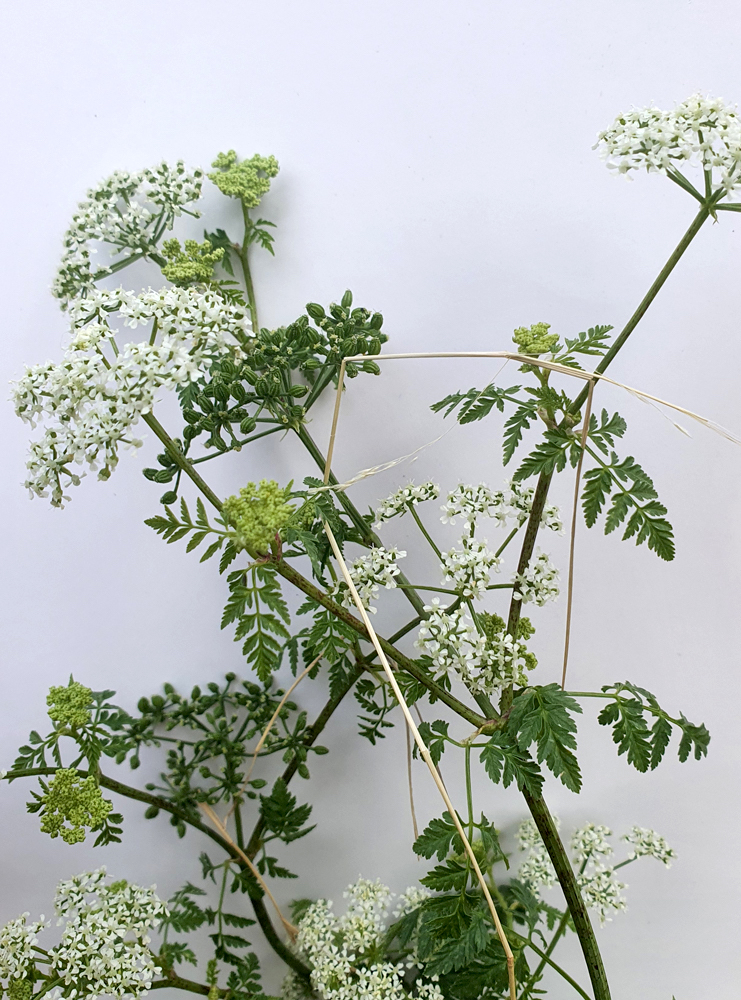
Hemlock: (Greek: κώνειον – koneion. Latin: conium)
Hemlock is a common but dangerous backyard weed to be aware of. Although it is part of the carrot family, (sometimes known as carrot fern!), it is far from edible, and was used as a poison in ancient Greece. The Greek philosopher Socrates famously died from ingesting a hemlock-based poison after being sentenced to death. If you touch this plant you should wash your hands immediately.
Mallow: (Greek: μαλάχη – malakhe. Latin: malva)
Mallow is a pretty purple-flowered weed that, unlike Hemlock, is safe to eat, but perhaps not very pleasant. Its bitter leaves were eaten by Roman poet Horace, who waxed lyrical about his humble diet in Odes 31: “as for me, olives, endives, and mallows provide sustenance”.
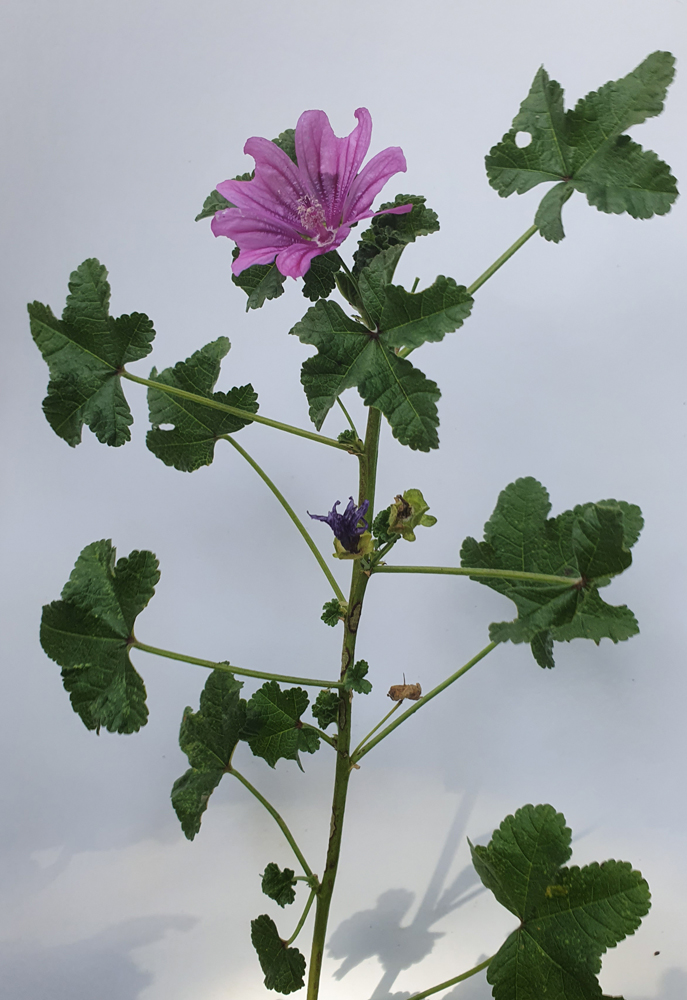
Dandelions: (Greek (modern): ραδίκι – radiki. Latin (late): dens leontis)
Dandelion and its relative chicory both have roots in classical history. Common dandelions can be included in your garden salad, and have been linked to the Greek goddess Hecate by modern pagans. Chicory is a member of the same botanical family as dandelions (Asteraceae or daisy family), and a variety of it is known as endive – the very same leafy green that Horace referenced earlier.
Sow-thistle: (Greek: σόγχος – sonkhos. Latin: sonchus)
Sow-thistle is another plant from the daisy family that was used as a potherb in ancient times. While foreign varieties have been introduced to New Zealand, we also have our very own native variety, Puha.
Calendula: (Greek (modern): καλέντουλα – kaléntoula. Latin (modern): calendula – diminutive of kalendae)
Also known as marigolds, this plant is well known for its bright orange or yellow flowers. Calendula belongs to the daisy family along with sow-thistle, but it was much more utilised in the ancient world than its cousin. Calendula has been used through the centuries for medicinal and culinary purposes. The ancient Romans and Greeks were well aware of this plant’s benefits, and used it in religious ceremonies. The edible petals also made a popular garnish because of their bright hue.
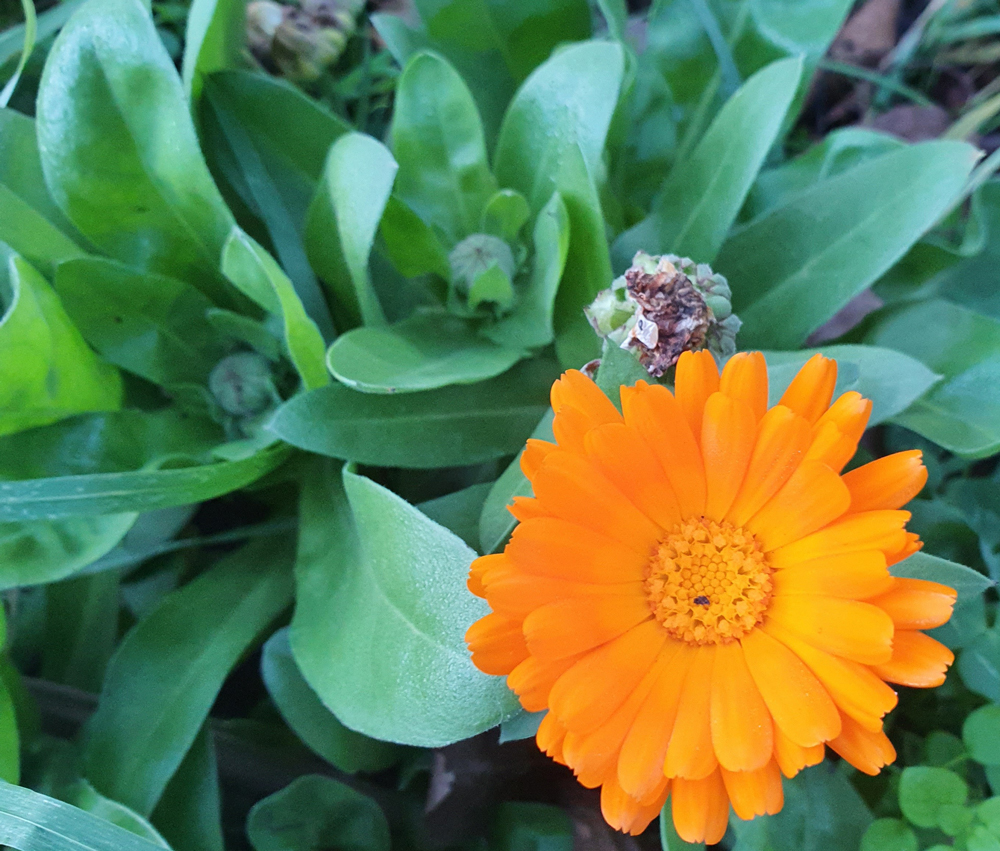
Yarrow: (Greek: possibly sideritis as a generic term for wound-healing plants. Latin: herba militaris or millefolium.)
Yarrow or Achillea millefolium can be found on roadsides in New Zealand. It derives its name from the Greek hero Achilles, who in Homer’s Iliad is mentioned as the person who taught his companion Patrocles the use of an unnamed “bitter root”, which he uses to heal the wound of another character. Achilles is said to have learned this from the wise centaur Chiron, who was known as a great healer. The “bitter root” may have been yarrow as it was well known for its blood-staunching properties and is native to temperate regions of Europe, including the Mediterranean. The use of the root by Achilles was discussed by the Roman author Pliny the Elder in The Natural History who debated the origin of the plant.
Fennel: (Greek – μάραθος – marathos. Latin – ferula)
Fennel was brought to New Zealand by European settlers and can be cultivated in your herb garden. Like hemlock, it is a part of the carrot family, but unlike hemlock, it is much more edible. Greek poet Hesiod claimed in Theogony that the titan Prometheus hid fire in a fennel stalk when he stole it from the god Zeus to give to humanity.
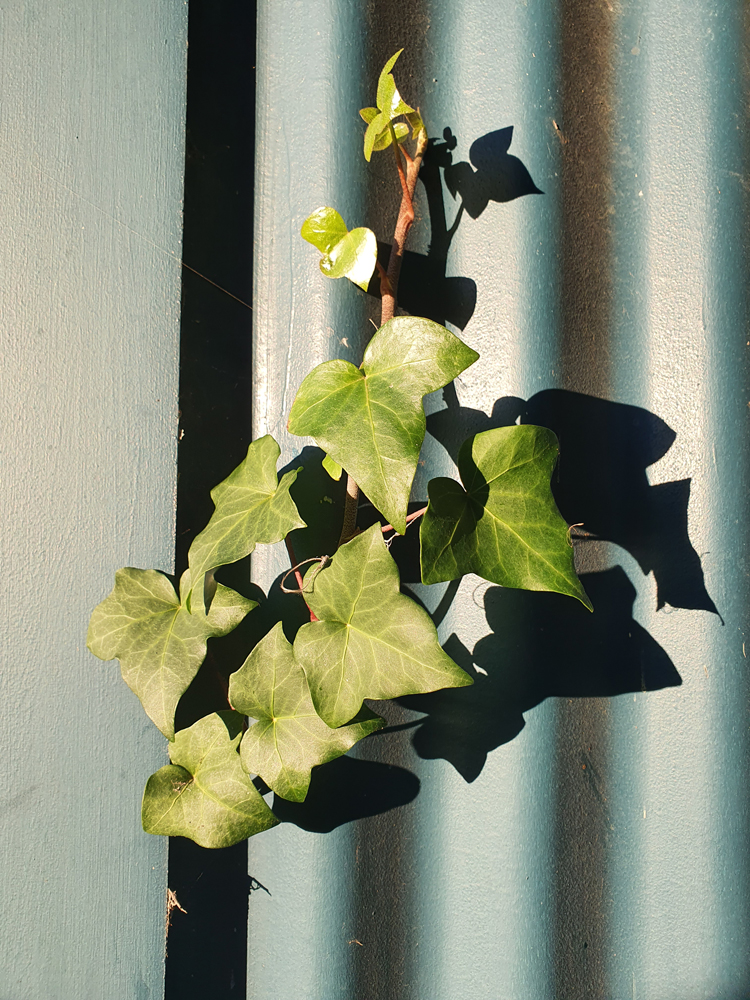
Ivy: (Greek – κισσός – kissos. Latin – hedera)
Ivy is an invasive climbing plant that loves to creep up walls. Due to its fast-growing and aggressive nature, this non-native plant has been officially labelled a pest by the New Zealand Department of Conservation. To the ancients however, it was quite the opposite of a pest. Both the Greeks and Romans made use of ivy wreaths, which were believed to have medicinal properties. The Greek physician Hippocrates is said to have used ivy to treat drunkenness, and so ivy wreaths were believed to have the same effect, and were associated with Dionysus and Bacchus, the Greek and Roman gods of wine.
Black Nightshade: (Greek – στρύχνον – strukhnon. Latin – strychnos)
Nightshades are a large and old genus of plants. One of its family is quite common in New Zealand; black nightshade is a pesky plant that can be found in many backyards. Luckily, black nightshade is tame in comparison to its more famous relative. Atropa belladonna, or deadly nightshade, lives up to its threatening name; the highly toxic plant was used as a poison in ancient Rome. While nightshades are often best avoided due to their toxicity, other relatives of these two plants include the very edible potatoes, tomatoes, and eggplants.
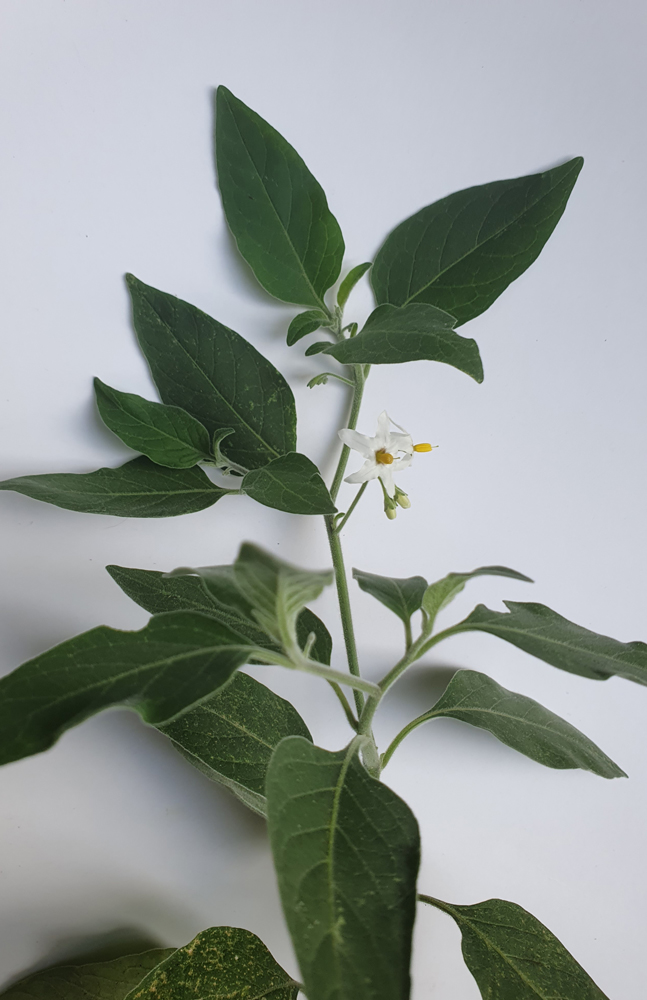
Apples: (Greek – μᾶλον – malon. Latin – pomum as a generic word for fruit)
Apples are one item on this list that are still very popular today and are a favoured fruit tree in gardens. While delicious, they have also caused strife; the Trojan War would never have happened if not for a golden apple! In another Greek myth, the huntress Atalanta was tricked into marriage with Melanion when he distracted her with golden apples. However, the importance of apples was not restricted to mythology in the classical world – the Greeks may have also used an apple a day to keep the doctor away, as they were considered by the ancient Greek physician Galen to be part of a healthy diet.
Hellebore: (Greek – ἑλλέβορος – helleboros. Latin – helleborus)
Hellebore is a flower that is prized for the fact that it is both easy to grow and blooms in winter. Although beautiful, they are unfortunately also poisonous. This plant was used in antiquity for medicinal purposes and also appears in mythology; the Greek hero Heracles was cured from the madness the spiteful goddess Hera had cursed him with by the use of hellebore.
Print out this list and go around your back garden or on a short stroll in your local area, and see how many of these plants you can identify. Then next time you are out and about you can impress your family with your amazing botanical and classical knowledge!
Laura Bythell is currently working towards completing a Bachelor of Arts majoring in Classics. She has worked as a gallery host at the Teece Museum since 2017.
Images: Laura Bythell, 2020
References:
Andrew Dalby. Food in the Ancient World from A to Z. Routledge. 2003.
Dioscorides. De Materia Medica. Accessed June 2020, URL: https://archive.org/stream/de-materia-medica/scribd-download.com_dioscorides-de-materia-medica_djvu.txt
Hippocrates (ed. Charles Darwin Adams). The Genuine Works of Hippocrates. Accessed June 2020, URL: http://www.perseus.tufts.edu/hopper/text?doc=Perseus:text:1999.01.0248
Pliny the Elder. The Natural History. Accessed June 2020, URL: http://www.perseus.tufts.edu/hopper/text?doc=urn:cts:latinLit:phi0978.phi001.perseus-eng1:1.dedication
Gwen Skinner. Simply Living. Reed Publishing. 1981.
This is a wonderful article. I love learning about plants used in ancient times so that we can appreciate them even more today.
Loved this, Laura. Thank you.
Crazy how many of these I can actually find in my backyard… I just went to have a look and found just about all of them.
This article is just the sort of stimulus to the imagination and our powers of observation, and the wonders of discovery that we all need. Thanks for writing it.